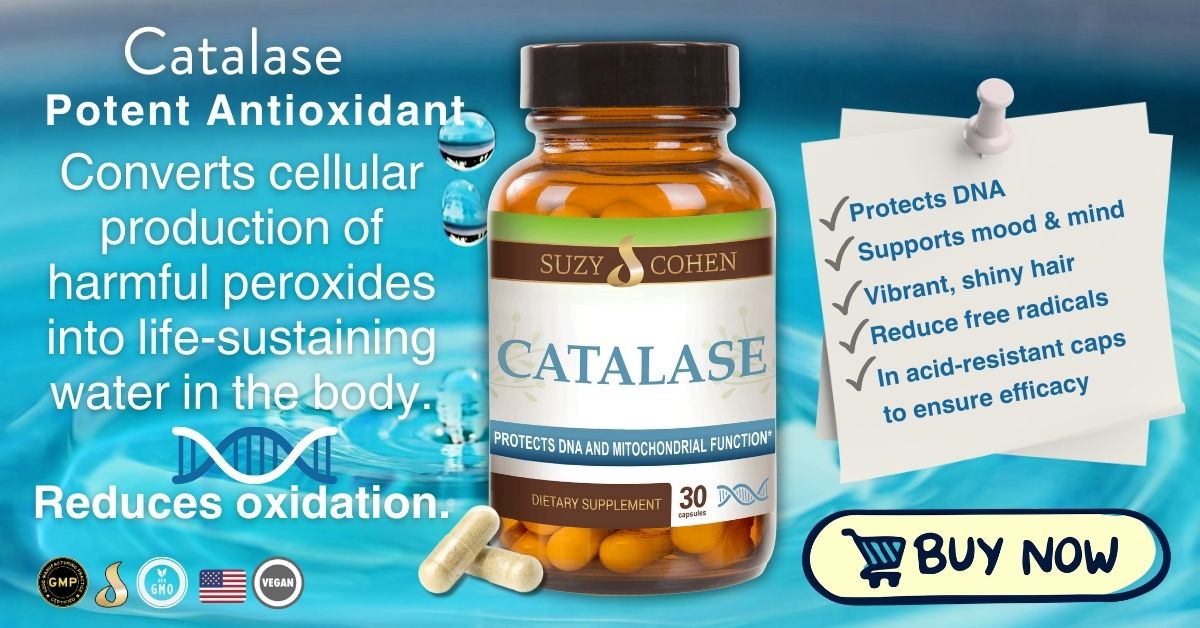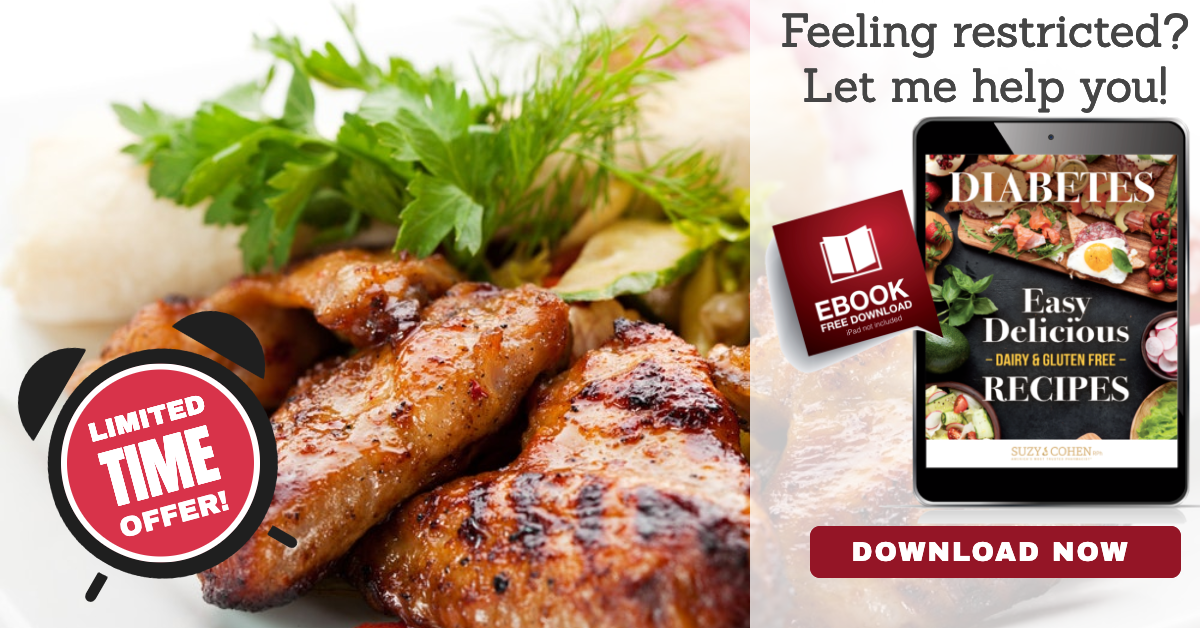What's On This Page?
ToggleThis article is about the 12 critical -and natural blood thinning foods, spices, and herbs that you can incorporate into your diet today. And you might be wondering WHY you’d want to even do that. It’s because people experiencing blood clots are occurring at an unprecedented rate these days!
The medical term for blood clot is “thrombus” just so you know in case you’re researching this later on.
Blood becomes thicker than normal when a protein called fibrinogen increases. Its main task is to generate a mesh network of platelets so that they aggregate. This stops blood flow. You want some fibrinogen around because otherwise, you’d bleed to death from a minor cut.
See my graphic here which visually explains how a little cut to the vessel is healed by having proper healthy amounts of fibrin. It forms a clot to seal up the hole in the blood vessel wall so that you don’t bleed to death from a paper cut! So clot formation is critical and useful unless, of course, a piece of the clot breaks off! The body knows not to do this as a general rule, or we’d all die after a minor cut.
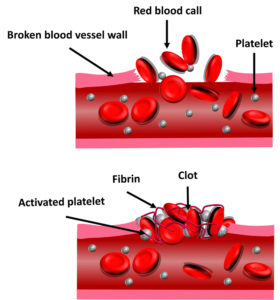
Too much fibrinogen creates excessive platelet clumping, and thus a clot that blocks blood flow. The problem is that it’s too high.
Blood becomes thicker than it should because of excessive fibrinogen. Elevated fibrinogen is believed to slow down blood flow causing your heart to work harder. High fibrinogen levels alone is a risk factor for heart attack and stroke.
You may not even realize you have a clot because it is small and completely asymptomatic.
As it breaks down in your body little by little, a protein called D-Dimer may increase, and this can be measured via blood tests. Liver disease and heart conditions are commonly associated with elevated D-dimer and it’s good to know your level because you can do something well in advance of a major problem. I’m all about prevention. Read my article, Understanding D-Dimer and 10 Strategies to Reduce It.
What’s Happening Now?
It used to be just people with risk factors who were high on the list to form a clot, but again, something has changed making more people who would never be at risk, be at risk!
New findings from the University of Bristol, Cambridge have published startling statistics in the new issue of CIRCULATION.
They looked at about 48 million people to determine that during the first week or two of COVID-19, the risk is 21 times greater to have a heart attack or stroke! This should come as no surprise to anyone because the virus binds directly to the ACE receptors which control blood pressure. The potentially life-threatening event dropped from 21 times, to about 4 times the risk if you were a month out. And the risk is still high for an entire year, which explains what we’re seeing today.
It used to be just these typical risk factors:
- Smoking or long history of nicotine use
- Having obesity
- Pregnancy
- Diabetes or pre-diabetes
- A hospitalization
- Being sedentary for a long time
- Use of estrogen-containing HRT or birth control
- Advanced age
- Elevated CRP (C reactive protein) which increases fibrinogen
- Elevated fibrinogen
- Hypertension
- Cancer
Today, we should add newer risk factors such as activation of ACE receptors, history of a serious viral infection such as COVID, and myocarditis as well as others I cannot list. Sometimes a clot forms within minutes or hours, and in other people, it takes many months or even years. There is no set time frame, so consuming natural blood thinning foods, spices and herbs are always wise.
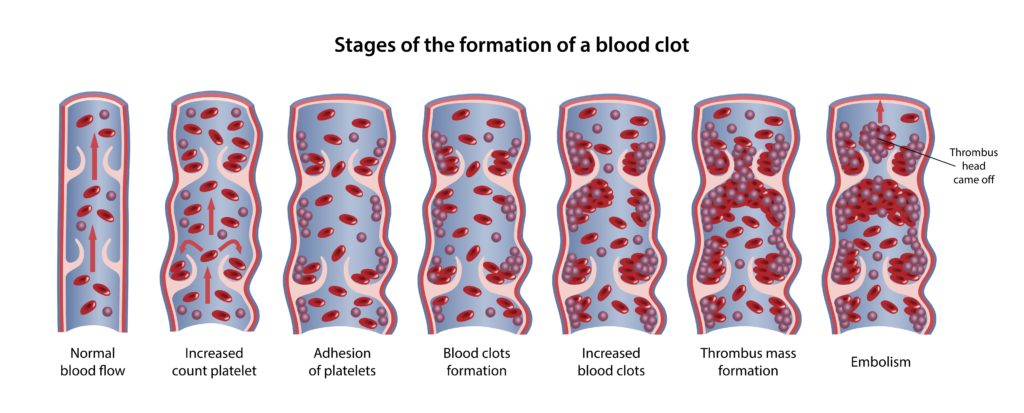
Blood Clots Can Form Anywhere
If a clot develops, a piece of it can break off and that’s where the danger lies. The broken off part can travel through the bloodstream and lodge somewhere it shouldn’t, such as in the lungs. If this happens the term used is a pulmonary embolism. Symptoms of this include chest pain, coughing, difficulty with respiration, heart rhythm changes, bloody sputum, or shortness of breath.
If part of the clot breaks off and lands in or around the brain, it can cause a stroke. If it clogs up a vessel near the heart, then a heart attack will occur. The CDC has posted this INFORMATION on their site.
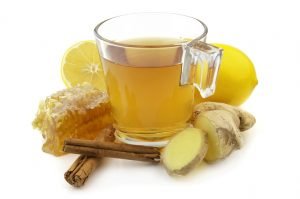
Natural Blood Thinning Foods, Spices and Herbs
Cayenne Pepper
Cinnamon
Garlic
Ginger
Ginkgo biloba
Grape Seed Extract
Lumbrokinase
Nattokinase
Resveratrol
Turmeric
Vinpocetine
Vitamin E
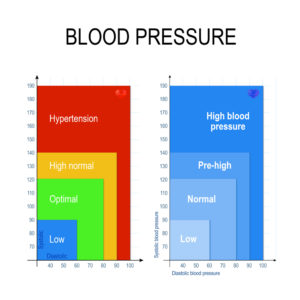
Does a Clot Cause Hypertension?
There is more information in an article called Understanding Blood Clots.
You may also be interested in my other article, POTS: How Salt Affects Blood Pressure.
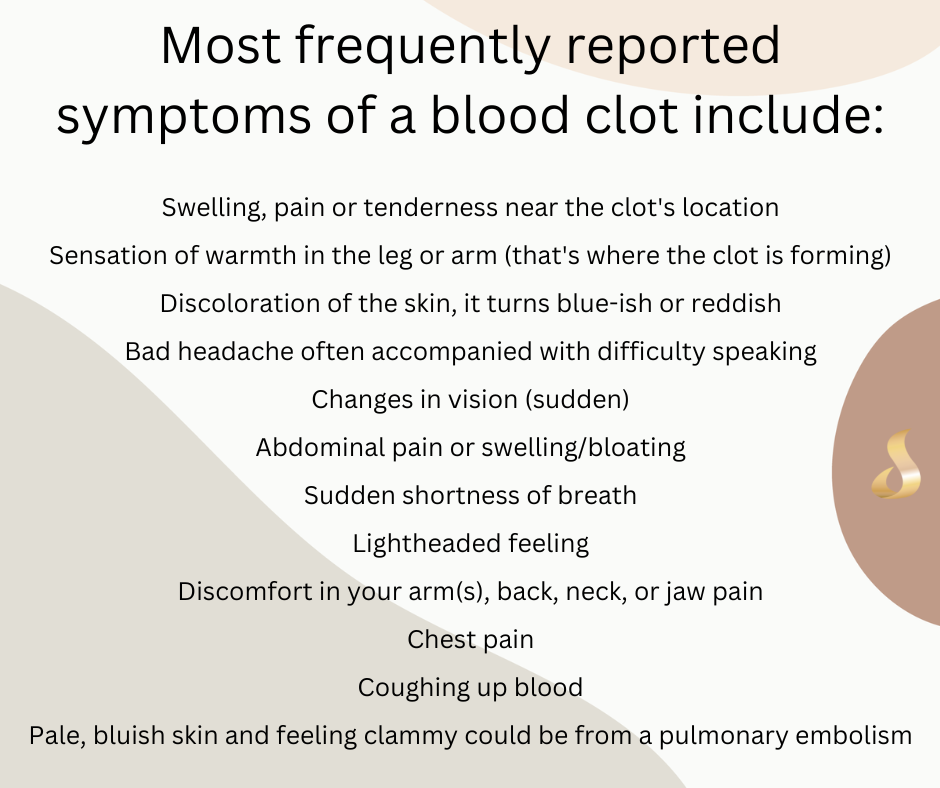
Symptoms of a Blood Clot
The symptoms vary based upon the location and size of the blood clot, a person’s age and prior medical history. Some people note one or two symptoms, while others experience multiple symptoms so please log these into your brain because again, blood clot formation is at an unprecedented rate. Someone you know may get this and you will be able to spot the signs and symptoms right away, then you can call
9-1-1 and get medical help.
Most frequently reported symptoms of a blood clot include:
- Swelling, pain or tenderness near the clot’s location
- Sensation of warmth in the leg or arm (that’s where the clot is forming)
- Discoloration of the skin, it turns blue-ish or reddish
- Pale, bluish skin and feeling clammy could be from a pulmonary embolism
- Bad headache often accompanied with difficulty speaking
- Changes in vision (sudden)
- Abdominal pain or swelling/bloating
- Sudden shortness of breath
- Lightheaded feeling
- Discomfort in your arm(s), back, neck, or jaw pain
- Chest pain
- Coughing up blood

Suzy Cohen, has been a licensed pharmacist for over 30 years and believes the best approach to chronic illness is a combination of natural medicine and conventional. She founded her own dietary supplement company specializing in custom-formulas, some of which have patents. With a special focus on functional medicine, thyroid health and drug nutrient depletion, Suzy is the author of several related books including Thyroid Healthy, Drug Muggers, Diabetes Without Drugs, and a nationally syndicated column.
